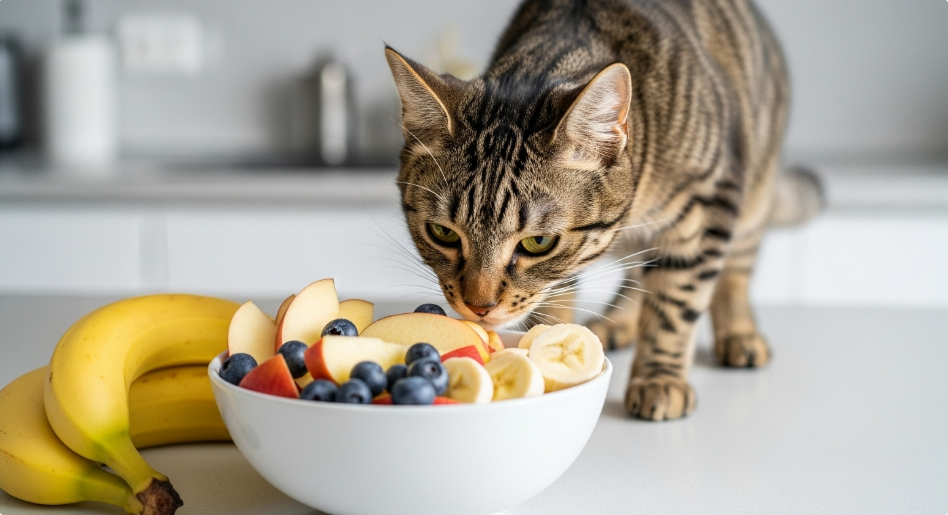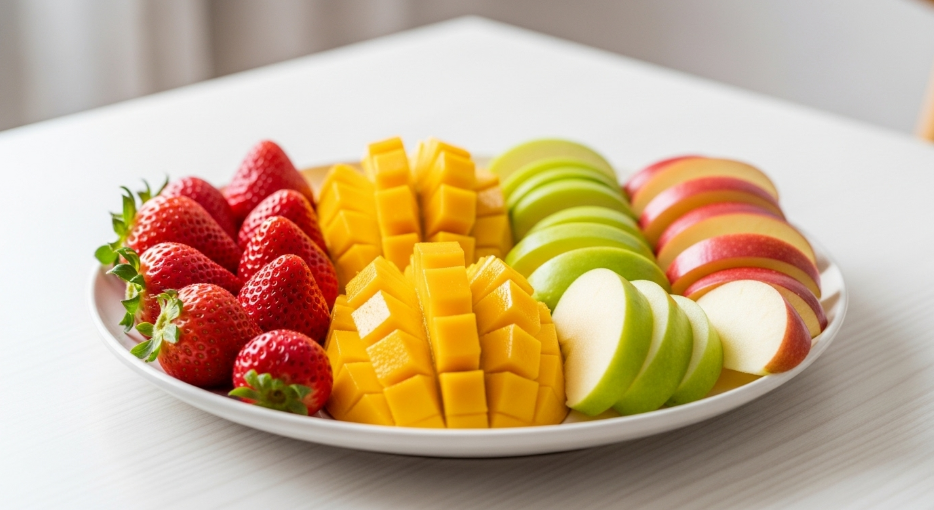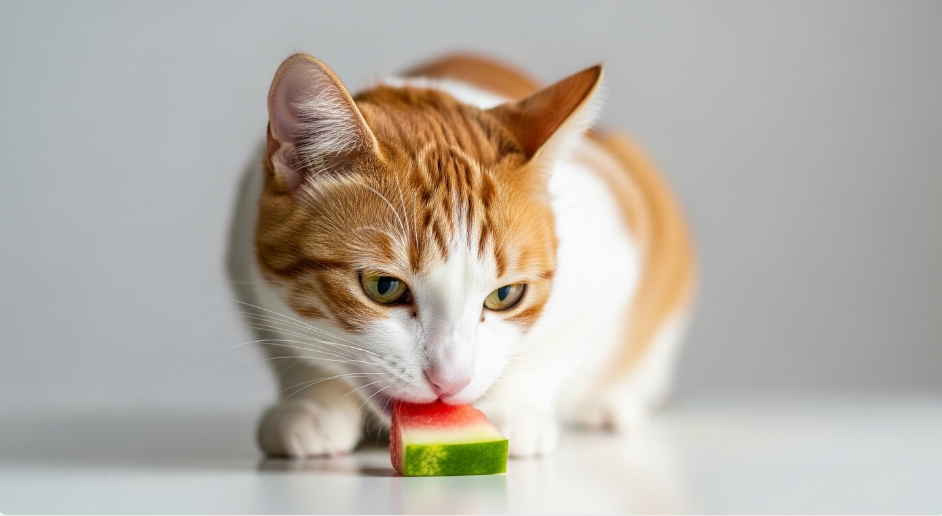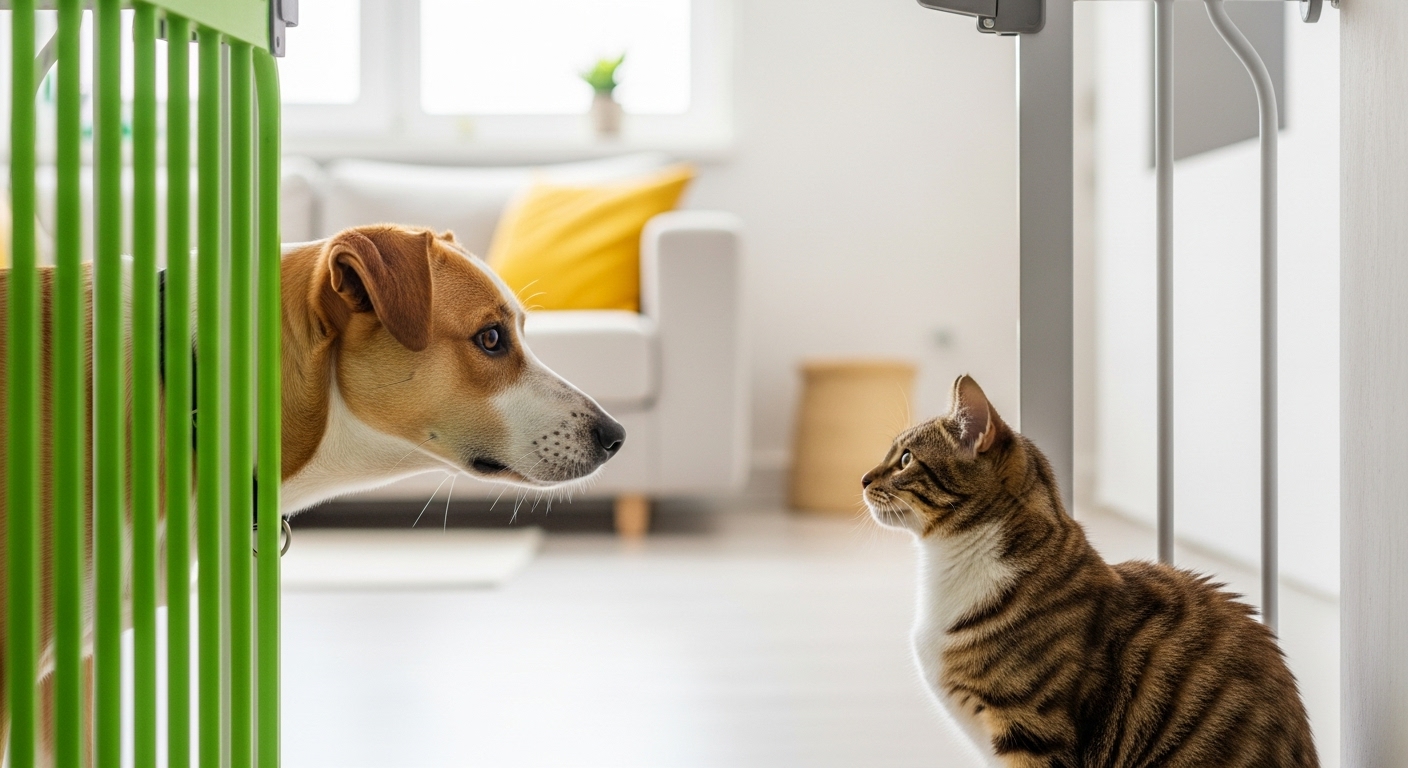Cats are curious creatures and may show interest in your fruit bowl. But can cats eat fruit safely? As obligate carnivores, cats need meat-based diets, but some fruits can be safe treats in small amounts. This guide lists safe fruits for cats, explains how to prepare them, and highlights fruits to avoid. Follow these tips to keep your cat healthy and happy.
Why Fruits Are Treats, Not Meals, for Cats
Cats rely on meat for essential nutrients like taurine and protein. Fruits offer vitamins and fiber but aren’t necessary for a balanced diet. Since cats lack sweet taste receptors, they may enjoy fruits for their texture or smell, not flavor. Overfeeding fruits can cause digestive issues or weight gain due to high sugar content. Limit treats to 10% of your cat’s daily calories.
Key Tips Before Feeding Fruit
- Consult Your Vet: Check with a veterinarian before adding new foods, especially for cats with health issues like diabetes.
- Small Portions: Offer only 1-2 small pieces to avoid stomach upset.
- Proper Preparation: Remove seeds, pits, stems, and rinds, which can be toxic or choking hazards.
- Watch for Reactions: Monitor for vomiting, diarrhea, or lethargy after introducing a new fruit.

Safe Fruits for Cats
Here are fruits that are generally safe for cats when prepared properly and given in moderation:
- Apples: Rich in fiber and vitamin C. Remove seeds and core, as seeds contain cyanide. Peel and cut into small pieces.
- Bananas: High in potassium and vitamin B6. Slice into small bits and offer fresh or frozen. Avoid overfeeding due to high sugar. Learn more about bananas for cats in our post Can Cats Eat Bananas?.
- Blueberries: Packed with antioxidants and vitamin C. Wash and cut into quarters to prevent choking.
- Strawberries: Contain fiber and vitamin C. Remove stems and leaves, then slice into small pieces.
- Watermelon: Hydrating and low in calories. Remove seeds and rind before offering small chunks.
- Cantaloupe: High in vitamin C and beta-carotene. Remove rind and seeds, and cut into small cubes.
- Mango: Rich in fiber and vitamins A, C, and B6. Peel and remove the pit, then offer small slices.
- Pears: Provide fiber and vitamin C. Remove seeds, core, and stem before serving small pieces.
- Pineapple: Contains vitamins and fiber but is high in sugar. Remove skin and core, and offer tiny portions.
- Raspberries: Offer fiber and antioxidants. Limit to 1-2 berries due to small amounts of xylitol, which can be harmful in large quantities.

Fruits Cats Should Avoid
Some fruits are toxic or harmful to cats and should never be offered:
- Grapes and Raisins: Can cause kidney failure, even in small amounts. Symptoms include vomiting, lethargy, and diarrhea.
- Citrus Fruits (Oranges, Lemons, Limes, Grapefruit): Contain oils and compounds that irritate the digestive system and may cause vomiting or nervous system issues.
- Avocado: Contains persin, which can cause vomiting, diarrhea, and breathing issues. The pit is also a choking hazard.
- Cherries: Contain cyanide in pits, stems, and leaves, which is toxic. The flesh is safe but not worth the risk.
- Passion Fruit: The flesh is not toxic, but the rind and seeds can cause digestive issues or choking. Avoid due to lack of clear safety data.
If your cat eats a toxic fruit, contact your vet or the ASPCA Animal Poison Control Center (888-426-4435) immediately. Watch for signs like vomiting, diarrhea, or unusual behavior.
How to Prepare Fruits for Cats
Proper preparation ensures fruits are safe for your cat:
- Wash Thoroughly: Remove dirt, pesticides, or chemicals.
- Remove Harmful Parts: Discard seeds, pits, stems, leaves, and rinds.
- Cut into Small Pieces: Prevent choking by offering bite-sized portions.
- Avoid Processed Fruits: Canned or dried fruits often contain added sugars or preservatives harmful to cats.
- Start Small: Introduce one fruit at a time in tiny amounts to monitor reactions.
Curious about other human foods for cats? Check out our post on Can Cats Eat Peanut Butter?.
Common Questions About Cats and Fruit
Can Cats Eat Fruit Every Day?
No. Fruits should be occasional treats, not daily meals. Too much fruit can lead to digestive issues or weight gain. Stick to 1-2 small pieces a few times a week.
Why Don’t Cats Taste Sweetness?
Cats lack sweet taste receptors due to a genetic mutation, so they don’t enjoy sugar like humans do. They may like fruits for their texture or smell, like the meat-like scent of cantaloupe.
What If My Cat Eats a Toxic Fruit?
Contact your vet or the ASPCA Animal Poison Control Center (888-426-4435) right away. Symptoms like vomiting, diarrhea, or lethargy need immediate attention. Keep toxic fruits out of reach.
Can Kittens Eat Fruit?
Kittens have sensitive stomachs and need a meat-based diet for growth. Avoid fruits until they’re older, and consult a vet first.

Final Tips for Feeding Fruit to Cats
- Always prioritize a balanced, meat-based cat food diet.
- Offer fruits as rare treats, not replacements for meals.
- Monitor your cat’s reaction to new fruits and stop if you notice issues.
- Consult a vet for personalized advice, especially for cats with health conditions.
By offering safe fruits in moderation, you can share a fun treat with your cat while keeping them healthy. Share your cat’s favorite fruit snacks with us at Petfel!
